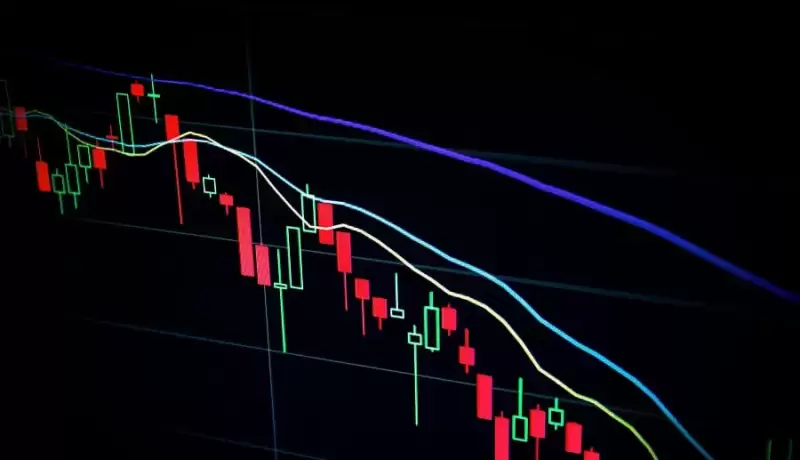 |
|
 |
|
 |
|
 |
|
 |
|
 |
|
 |
|
 |
|
 |
|
 |
|
 |
|
 |
|
 |
|
 |
|
 |
|
Cryptocurrency News Articles
MantraDAO's OM Token Crashes 80% in an Hour, Wiping Out $5 Billion in Market Value
Apr 15, 2025 at 01:23 am
Today, the OM token—the native token of the MANTRA (formerly MantraDAO) project—plummeted more than 80% within an hour, triggering widespread panic and controversy.

Today, the OM token—native to the MANTRA (formerly MantraDAO) project—saw a decline of over 80% within a single hour, sparking widespread panic and controversy in the crypto sphere. At its worst, the crash wiped out an estimated $5 billion in market value, with investors accusing insiders of dumping large holdings just before the collapse.
At its peak on April 14, OM reached a high of $1.36, but by the time the dust settled, the token had plummeted to lows of $0.14. This steep plunge was clocked at over 90% crash in seven hours, a staggering fall from the highs hit earlier in the day.
The timing of the crash, during low-liquidity hours on Sunday evening UTC, or early Monday morning in Asia, has been a key focus for investors. They claim that insiders sold off significant volumes of the token, ultimately crashing the token.
However, some wallets that engaged in large sell-offs showed suspicious on-chain behavior starting in March 2025, hinting at a coordinated effort to destabilize the token.
MANTRA’s leadership has responded to the accusations, attributing the meltdown to “reckless forced closures” of OM account holders by centralized exchanges. In a statement, MANTRA said that the rapid decline was largely driven by actions from CEXs during low-volume periods, suggesting either gross negligence or deliberate market manipulation by these platforms.
“The timing of the liquidations, during low-liquidity periods on Sunday evening in UTC time, also raised concerns among community members, who noted that the rapid price drops were largely driven by CEXs,” MANTRA said.
After the crash, questions arose about whether major exchanges like Binance conducted sufficient due diligence before listing OM. Binance founder and former CEO Changpeng Zhao (CZ) responded by reaffirming a decentralized philosophy.
“Neither CEX nor DEX should set up a listing process. All tokens should be allowed to access, and transactions should be decided by users themselves,” CZ said.
On risk assessment, he added that a project’s user base can be a strong indicator of its legitimacy.
“How many real users there are is usually a good indicator,” CZ said, advocating for community strength over centralized vetting.
One of the exchanges affected by the OM token collapse, OKX, has taken a proactive stance. CEO Star described the event as a “big scandal in the entire crypto industry.”
“The on-chain data—including token unlocking, collateral positions, and liquidations—is all public and can be independently verified,” Star said.
OKX noted that the price collapse began on other platforms before spreading market-wide on April 14. The exchange said it had been observing unusual activity linked to OM since March 2025, highlighting significant changes to the token’s economic model since October 2024.
In response, OKX has adjusted its risk control measures and issued market risk warnings to its users.
Despite the skepticism, MANTRA CEO John Mullin has denied any wrongdoing. In a statement, Mullin refuted claims that investors such as Laser Digital engaged in insider sales ahead of the token crash.
“There is no evidence of insider selling by Laser Digital or other key investors, and we can attest to the fact that these investors acted in good faith throughout their involvement in the project,” Mullin said.
He also urged the community to avoid speculation and focus on verifiable facts.
“We understand that the rapid price movement of OM has sparked a great deal of discussion and speculation. However, we encourage everyone to remain calm, avoid spreading rumors, and make investment decisions based on complete and unbiased information,” Mullin added.
Disclaimer:info@kdj.com
The information provided is not trading advice. kdj.com does not assume any responsibility for any investments made based on the information provided in this article. Cryptocurrencies are highly volatile and it is highly recommended that you invest with caution after thorough research!
If you believe that the content used on this website infringes your copyright, please contact us immediately (info@kdj.com) and we will delete it promptly.
-

-

-

-

-

-

- The burn represents a significant portion of OM's total token allocation and is part of a broader “stabilization strategy” following the token's over 90% drop on April 13.
- Apr 16, 2025 at 11:00 pm
- Mmantraframed the decision as a commitment to long-term value creation, suggesting that cutting excess supply would support a healthier market structure. However, critics argue that the move is more about damage control than genuine progress.
-

- Elastos Drops Bombshell With Elacity, a Web3 Platform That Hands Creators the Keys to Tokenize and Monetize
- Apr 16, 2025 at 10:55 pm
- Today, Elastos dropped a bombshell with the launch of Elacity, a Web3 platform that hands creators the keys to tokenize and monetize their digital content—think music, films, or essays—directly to fans, bypassing the usual platform tolls.
-

- DWF Labs, an Abu Dhabi-based crypto investor and trading firm, bought $25M worth of World Liberty tokens
- Apr 16, 2025 at 10:55 pm
- DWF Labs, an Abu Dhabi-based crypto investor and trading firm, said on Wednesday it had bought $25 million worth of digital tokens issued by the World Liberty Financial, the crypto venture controlled by the family of U.S. President Donald Trump.
-

























































